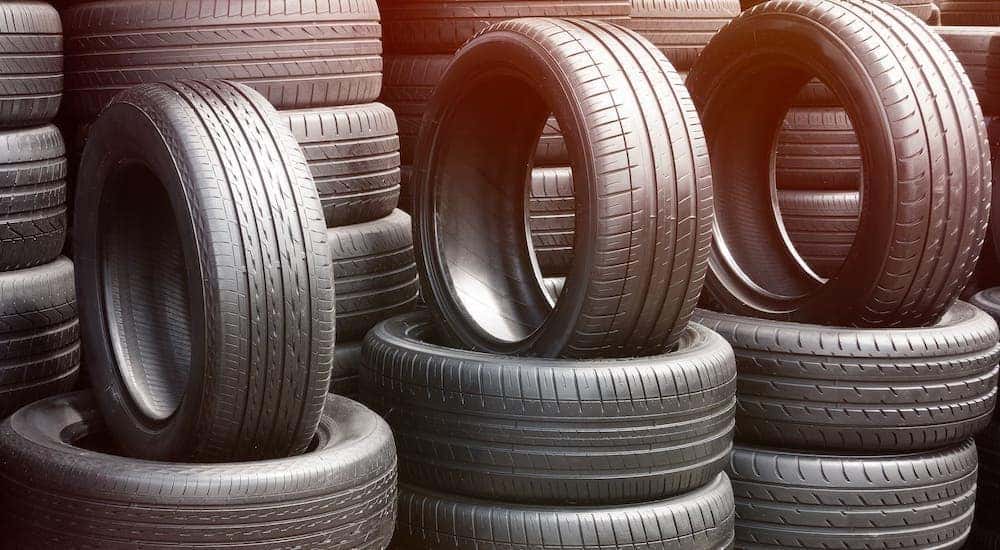Trusted Tire Shop Morris: Comprehensive Tire Solutions and Exceptional Service
Trusted Tire Shop Morris: Comprehensive Tire Solutions and Exceptional Service
Blog Article
Tire Solution: The Influence of Climate Condition
When it comes to making sure optimum efficiency and safety and security on the roadway, recognizing the influence of climate problems on tire solution is vital. In this conversation, we will certainly check out the complex connection between weather condition conditions and tire service, shedding light on the importance of weather-specific tire upkeep techniques and factors to consider.
Warmth and Tire Efficiency
When subjected to high temperatures, tires experience changes in performance that can significantly influence automobile security and handling. The warm generated from long term driving or heat problems causes the tire rubber to soften, causing minimized walk life and increased wear. As the rubber comes to be softer, the tire's grasp when traveling decreases, affecting braking ranges and general grip. In extreme instances, extreme heat can also trigger tire blowouts, presenting a severe safety and security threat to the car and its occupants.
In addition, high temperatures can accelerate the process of tire aging, creating the rubber to degrade quicker. This can result in fractures, protrudes, and other kinds of damage that jeopardize the architectural stability of the tire. To minimize the effects of warm on tire efficiency, chauffeurs need to frequently check their tire stress, rotate tires to make sure also wear, and check for any kind of indications of damages. Additionally, making use of tires specifically created to endure heats can help keep optimal performance and safety and security when driving.
Cold Climate Results
Cold weather problems can have a considerable effect on tire performance and safety and security. In cool weather condition, tires may additionally shed air pressure more swiftly, which can impact dealing with and fuel performance.
To alleviate the impacts of winter on tires, it is important to regularly examine tire pressure and inflate them to the producer's recommended levels. Utilizing winter or all-season tires designed for chilly climate problems can also improve grip and hold on icy or snowy roads - tires morris il. Appropriate tire upkeep, consisting of routine inspections for wear and damages, becomes much more critical throughout cooler months to make sure optimum performance and safety and security
Rainy Conditions Influence
During wet conditions, tire performance and safety can be significantly influenced by the damp roadway surface areas and minimized exposure. The walk pattern of tires plays a vital function in preserving traction on damp roadways. Tires with worn-out treads are more prone to hydroplaning, where a layer of water builds up in between the tire and the roadway surface, leading to loss of grip. To battle this, vehicle drivers need to consistently evaluate their tires for appropriate tread deepness and take into consideration buying tires specifically designed for damp conditions.

Snow and Tire Safety And Security
When driving in snowy problems, having the best tires can make a substantial distinction in security and performance. Winter season tires are created with unique rubber compounds and walk patterns to supply much better traction on snow and ice compared to all-season tires.
Along with using wintertime tires, it is essential to ensure they are correctly pumped up. Cold climate can create tire stress to go down, influencing grip and handling (mopar tire service specials). On a regular basis inspecting and preserving the right tire pressure is vital for ideal performance in snowy conditions

Weather-Related Tire Maintenance
When encountered with various weather, correct tire maintenance ends up being an essential aspect of car safety and security and performance. Weather-related tire maintenance incorporates a series of techniques aimed at making sure optimum tire function and durability in various weather situations. One vital aspect of weather-related tire maintenance is tire stress law. Varying temperature levels can create tire pressure to vary, affecting grip and gas efficiency. Frequently examining and adjusting tire pressure according to maker referrals is essential for safe driving in altering weather condition problems. In addition, tire step deepness plays a significant role in handling different weather aspects. Tires with appropriate walk depth supply much better hold on damp or icy roads, minimizing the danger of hydroplaning or skidding. Checking tire step consistently and changing tires when step wear gets to a specific depth is important for preserving traction and security in negative climate. By focusing on weather-related tire maintenance, chauffeurs can enhance safety, boost tire shop morris lorry efficiency, and prolong the lifespan of their tires.
Final Thought
In conclusion, weather condition problems have a significant effect on tire efficiency and safety and security (mopar tire service specials). From heat influencing tire stress and use to cool weather decreasing grip, it is essential to consider the climate when keeping and making use of tires.
In this conversation, we will explore the elaborate connection between weather conditions and tire solution, losing light on the significance of weather-specific tire maintenance methods and factors to consider.

Report this page